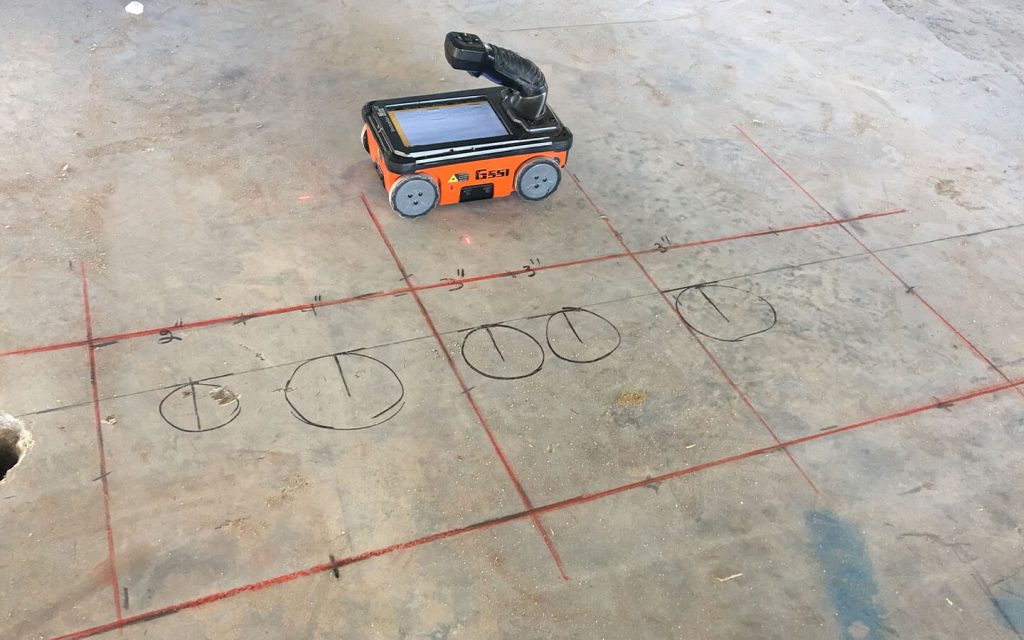Introduce the Transformative Power of Concrete Scanning in Making The Most Of Performance and Safety
Concrete scanning has arised as a vital device in the building and construction market, offering unmatched benefits in improving job performance and making sure security standards. The transformative power of concrete scanning exists in its ability to give thorough insights and real-time data, reinventing how jobs are prepared and executed.
Significance of Concrete Scanning
Guaranteeing the structural integrity and safety and security of construction projects starts with the essential action of conducting complete concrete scanning. Concrete scanning is a non-destructive approach used to discover and map subsurface aspects within concrete frameworks.
Furthermore, concrete scanning aids in optimizing task timelines and spending plan by preventing unanticipated prices and delays that might occur due to unanticipated obstructions within the concrete. Inevitably, spending in thorough concrete scanning is an aggressive strategy that boosts both efficiency and safety and security in construction jobs.
Exactly How Concrete Scanning Functions
Concrete scanning runs as a crucial tool in building and construction jobs by utilizing innovative technologies to identify and map subsurface elements without causing structural damage. Ground Permeating Radar (GPR) and Electromagnetic Induction (EMI) are two main techniques utilized in concrete scanning.
During the scanning process, the data collected is evaluated in real-time, enabling instant recognition of prospective hazards or challenges under the surface. This information aids in decision-making, making certain that building activities continue securely and efficiently. Furthermore, 3D imaging software can be used to produce topographic maps of the subsurface components, further boosting job preparation and execution. By using these innovative modern technologies, concrete scanning dramatically decreases the risk of pricey damages and injuries on building websites.
Benefits of Concrete Scanning
One of the primary advantages of concrete scanning is the capability to find and locate ingrained objects such as rebar, post-tension cable televisions, and channels precisely. Concrete scanning aids in planning and making much more properly, as it offers specific info regarding the area and depth of architectural components.

Instance Research Studies: Concrete Scanning Success

In another case, a construction firm used 3D concrete scanning to analyze the problem of aging concrete frameworks in a historic structure. The thorough scans given useful understandings right into the extent of degeneration and aided prioritize upkeep efforts efficiently. By proactively resolving locations of worry recognized through scanning, the firm had the ability to extend the lifespan of the structure and ensure owner security.
These instance researches emphasize the transformative power of concrete scanning in enhancing performance, accuracy, and safety in construction tasks.
Executing Concrete Scanning in Projects
Carrying out sophisticated scanning reference technologies during building projects has become increasingly crucial for enhancing accuracy and safety. By integrating concrete scanning right into job planning and implementation, building groups can determine possible threats, such as rebar or post-tension cords, hidden within concrete frameworks. This positive technique lessens the risk of accidents, hold-ups, and expensive rework, ultimately leading to much more reliable project timelines and budget plans.
To company website execute concrete scanning efficiently, task supervisors ought to team up carefully with skilled scanning experts to identify one of the most appropriate scanning strategies for the specific project requirements. Engaging scanning professionals from the early stages of a job makes it possible for the group to produce extensive scanning strategies that address essential locations of concern and make certain thorough information collection.
Moreover, integrating concrete scanning into regular project operations can simplify decision-making processes, as real-time check information offers prompt understandings right into the problem of concrete structures - Concrete Scanning. This data-driven approach promotes informed analytic and makes it possible for groups to make modifications quickly, cultivating a culture of efficiency and safety throughout the job lifecycle

Final Thought
To conclude, concrete scanning plays an essential function in boosting effectiveness and security in construction projects. By using sophisticated innovation to identify and map out underlying structures within concrete, this process assists to stop expensive blunders, guarantee architectural integrity, and lessen dangers on site. With the ability to discover surprise elements and offer precise data, concrete scanning shows to be an important device for optimizing project results and optimizing overall success.
Concrete scanning is a non-destructive method utilized to spot and map subsurface elements within concrete structures. Furthermore, concrete scanning aids in enhancing task timelines and budget by staying clear of unexpected expenses and delays that may develop due to unexpected blockages within the concrete. One noteworthy situation research study involves a massive remodelling project where concrete scanning played a critical duty in making sure task success.In one more situation, a building business utilized 3D concrete scanning to evaluate the problem of maturing concrete structures in a historical building. By incorporating concrete scanning right into task planning and execution, building and go to these guys construction teams can recognize potential threats, such as rebar or post-tension wires, concealed within concrete frameworks.